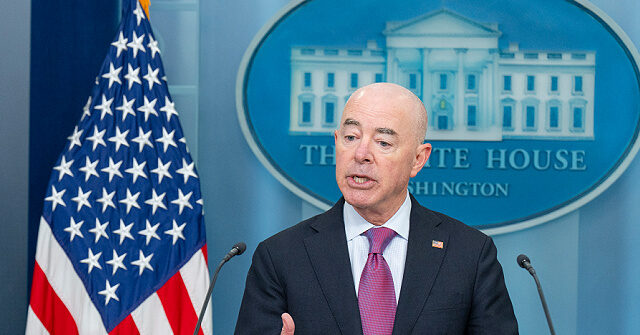On a recent episode of CNN’s “Situation Room,” Homeland Security Secretary Alejandro Mayorkas addressed concerns surrounding reported drone sightings over the East Coast, particularly in New Jersey and New York. During the broadcast, he sought to alleviate fears by asserting that there was nothing unusual about the sightings and that no credible threats had been identified. Mayorkas emphasized that reported drone sightings might often stem from cases of mistaken identity, where individuals misinterpret small aircraft as drones. This clarification is crucial in the context of heightened public concern and scrutiny regarding drone activity in crowded urban areas.
Secretary Mayorkas reassured the public by stating that there is currently no evidence of nefarious activities related to the reported drone sightings. He pointed out the commonality of misidentifying drones, explaining that multiple reports could stem from the same incidents, leading to inflated counts of sightings. He confirmed that he maintains regular communication with New Jersey Governor Phil Murphy, stating that experts deployed to the region have also found “no confirmation” of any drone activity, with some reported sightings ultimately identified as small aircraft. He reiterated that pilots have not reported any drones, further supporting his assertion of the absence of tangible threats from these aerial devices.
While stressing the absence of any drone threats, Mayorkas acknowledged the proliferation of drones in the public domain. He noted that even a teenager could easily purchase and operate a drone, underscoring the increasing accessibility of this technology. However, he pointed out that no concerning behaviors associated with malicious drone use have been observed, such as drones turning off lights at night or encroaching into restricted airspace, which would typically trigger alarm among authorities. This distinction is key in understanding the general operation of drones within designated airspace as compared to potential criminal activities.
In addition to calming public fears, Secretary Mayorkas highlighted an urgent need for increased legislative authority to address drone activity effectively. He emphasized that the Department of Homeland Security has made multiple appeals to Congress for broader powers to mitigate drone-related challenges, stating that both federal and local authorities must be adequately equipped to counter any potential risks posed by drones. This call for expanded authority suggests that, while current issues may not present immediate threats, the trajectory of drone use and technology could soon warrant more proactive measures from law enforcement and regulatory bodies.
The Secretary’s comments ignite a conversation about the balancing act between embracing drone technology for beneficial purposes while safeguarding public safety. As drone technology evolves, the governance surrounding its usage must keep pace with innovations and the potential risks associated with unsupervised or malicious use. Mayorkas’s remarks additionally underscore the importance of collaboration between various levels of government, especially in states where drone sightings have spurred alarms among local residents.
In summary, Secretary Alejandro Mayorkas’s television appearance served to quell concerns regarding drone activity on the East Coast, reaffirming that no credible threat has been substantiated through current investigations. However, the call for enhanced legislative powers to manage and counter drone usage reflects a broader recognition of the complexities introduced by such autonomous flying devices. As drone sightings become more frequent, effectively providing both public safety and regulatory frameworks will be pivotal in addressing the challenges that accompany this emerging technology.

